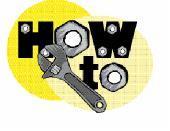
Owning a computer comes with its fair share of risks and demands. Buying a computer is one thing; proper maintenance is another.
The Gleaner's technical support teamsters pooled their expertise to offer advice on general computer care.
The major risks for any computer are extreme heat, moisture and magnetic fields. When cleaning internal and external sections of your computer, compressed air should be used. Of course, it is always advisable to contract an expert for cleaning internal components.
Generally, the areas that need regular cleaning are the monitor, wires, keyboard, mouse and mouse pads.
Supplies to keep handy

Simple Green
409 cleaner (not in a compressed can)
Rubbing alcohol
Goof Off
Compressed air - 16oz can
Clean white rags
Q-Tips - the longer the better
3M toner vacuum
Always remove power source before cleaning. Never reconnect the power before the computer is completely dry. Rubbing alcohol is for external use only; powder should never be used.
Topping the list of cleaning nuisances is dust. Water and rust are other tech peeves. Magnets are main enemies of any computer.
The technical support team strongly warns against eating around your computer, especially near the keyboard. It is also recommended that the keyboard be covered when not in use.
To clean the keyboard, one should use compressed air to remove debris, dip a cotton tip in rubbing alcohol to tackle soiled keys and hard-to-reach spaces.
Since computers should not be exposed to extreme temperatures, there are particular climates and regions which would be unsuitable for operation. Thanks to air conditioning, these devices can operate in tropical climate. Temperature must ideally fall below 40 degrees Celsius. Store your PC in a cool area, but don't go to the extreme and hide it in the freezer. Check the manual for the recommended temperature range.
The storage area should be dust free, flat and stable.
Choosing the best brand is a matter of opinion, and frankly should be done based on needs, budget, and personal taste. However, an expert can advise you along the lines of your budget and needs.
Another critical element to maintaining one's computer is powering up or down. Always use the shutdown option provided by the Operating System. Save and close your programmes before using this procedure also. To extend computer life, follow the precautions in the manual.
Computers should be cleaned and checked every two to three months.
BASIC CLEANING TIPS
Keyboards
After turning off power and disconnecting the keyboard, remove the keys ever so gently. Of course, make note of their original position.
For example, pay attention to the way the spacebar comes off as it has two hooks on the underside. The keyboard must be turned upside down and tapped to loosen any debris caught. Afterwards, turn the keyboard upright and blow out remaining debris with the compressed air.
After cleaning keys with alcohol-soaked cotton swab, reposition them when dry. Electric contact cleaners are available at most electronics or computer stores. Apply just a touch of contact cleaner to the hole for the keycaps, let dry for five minutes before replacing the keycaps. Use cotton again.
Generally, one should also be able to hold the keyboard at an angle and blow air through the key rows to clear debris.
MOUSE
Shut off the computer and unplug the mouse. Toothbrush should be dipped in soapy water and shaken off. Gently scrub the mouse exterior. After doing the same with non-soapy water, repeat the process.
Twist the cover on the underside of the mouse counterclockwise as indicated by the arrows to remove the ball. Clean the ball, then rinse until no longer sticky.
Toothpicks and tweezers can be used to loosen and remove dirt collected around the rollers.
Cotton swab slightly dipped into alcohol should be used to remove dirt from the rollers. After thoroughly air-drying or blow-drying the parts, reassemble the mouse.
NB: According to the technical expert team, it is best to use an optical mouse to obviate this process.
GOLDEN LINKS:
http://www.librarysupportstaff.com/4compcare.html
www.techtv.com/callforhelp/howto/story/0,24330,2187377,00.html
http://library.thinkquest.org/5862/httcoyc.htm
Email questions or comments on this 'How To' feature to anthea.mcgibbon@gleanerjm.com or columns@gleanerjm.com.